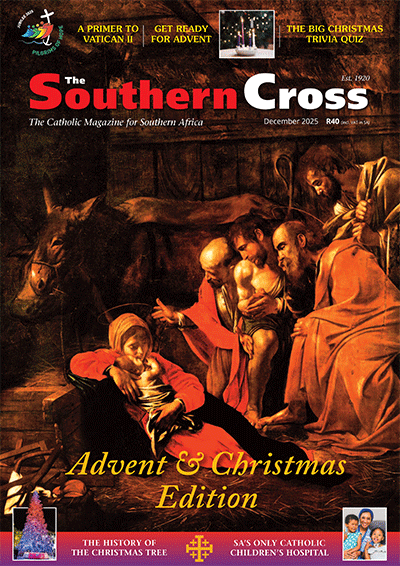Why Mary is Our Mother
By Father Ralph de Hahn – Mary, her son and some disciples attend the wedding feast at Cana, and it is there that Jesus bestows on his mother a new all-embracing role in his redemptive plan.

The story is well-known. The wine runs short. The caring and observant mother turns to her son and whispers: “Son, they have no wine!” There is a pause. A charming smile.
Apparently, Jesus is put on a spot. What is my mother asking of me? Is she requesting a miracle in this public arena? Does she realise that if I am to expose my divinity as the Son of God here, she will be setting me on the road to Calvary?
“Woman,” says Jesus “why turn to me? My hour has not yet come.” The “hour” was always spoken of in relation to his passion and death. Jesus then saw the new role of Mary as the mother of all humanity; he as the Redeemer, she as the mother of all those redeemed! He as the new Adam, she as the new Eve, the Woman of Genesis.
Inspired by the Holy Spirit, Mary is moved to utter her consent: “Do whatever he tells you.” His mother was certainly anticipating his hour. He knew it; she knew it!
“Fill the six stone jars with water,” said Jesus. “Draw some out now and take it to the chief steward.” The miracle was complete, the best wine was served. The apostle John concludes: “He let his glory be seen and his disciples believed in him” (2:11).
It is from this point forward that we observe a distinct change in the relationship of Jesus to his mother. Here he changed water into wine; later in his ministry he will change the wine into blood.Mary is the Woman of Genesis and, according to the Latin version, was the woman to crush the head of the serpent (Gen 3.15). Together, in their respective roles, Mary and her divine Son will be engaged in the colossal work of redeeming mankind. She would be the universal Woman.
Jesus asked his mother to take on a new challenging role; her all-giving love was to be expanded over a wider area of humanity; to love all mankind as he did.
We believe that she had no further children in the flesh, for she was the unique temple of the Son of God and belonged to him alone. However, as Woman, she was to be the mother of many more children, not in the flesh, but in the spirit.
And Jesus again emphasises this truth on Calvary when, with his dying breath, he turned to his mother and said, “Woman this is your son”, and then turned to John, saying: “This is your mother.”
And John’s own mother was also present under the cross (Jn 19:26). Here we find John representing all humanity and Mary the mother of all the redeemed, but also the mother of his mystical body, the Church.We know of her fiat at the annunciation; but it would come at the supreme cost. The prophecy of Simeon in the temple would come to pass: “…and your own soul a sword shall pierce” (Lk 2:35). She will become the queen of martyrs for her suffering son was her own flesh and blood.
We find Jesus again emphasising this new relationship in Matthew’s gospel in that extraordinary event when Jesus is told by the crowd that his own mother is seeking him.
“Who is my mother?” he cries, and opening his arms wide to all the people, he loudly declares: “Here is my mother and my brothers…anyone who does the will of my heavenly Father is my brother, my sister and my mother” (12:48).
Indeed, Jesus addressed many women as “Woman”, among them the young adultress, the Samaritan woman, the Canaanite woman, Mary of Magdala and many more. But addressing his own mother as “Woman” must have been a deliberate proclamation of her new role in his plan of redemption.
Mary became our mother in the hour she lost her divine son. She is only one of the many treasures Jesus left to his Church.
- When the ‘Holy Bird’ came at Pentecost - June 1, 2022
- Marist Brothers Celebrate their Name! - September 10, 2021
- Mary Magdalene – From 7 Demons to Disciple - July 22, 2021





